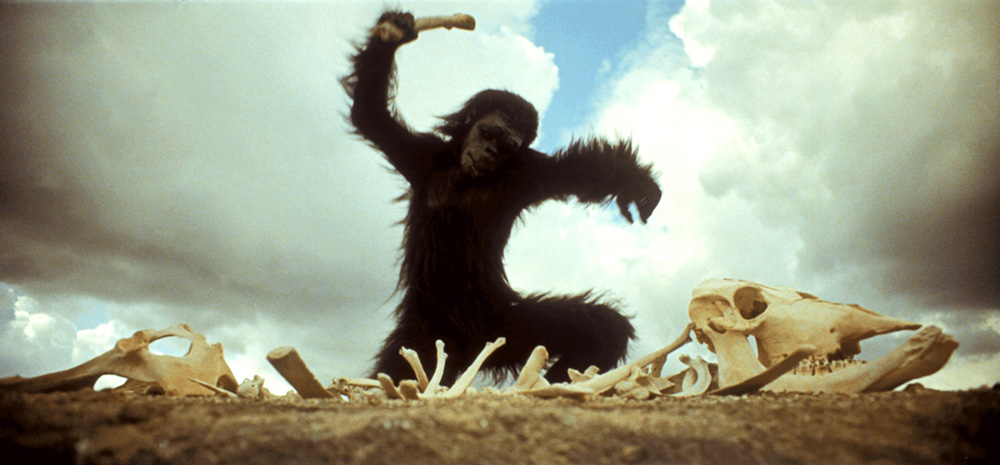
(c)1968 Turner Entertainment Co. All rights reserved.
``2001: A Space Odyssey'' Kubrick's thoroughly researched work and the specialists gathered
2018.09.21
UK MGM Studios
Around that time, special effects work on ``2001: A Space Odyssey'' had already begun in the UK, with two big-name supervisors, Wally Veevers and Tom Howard, joined by a gentleman from Canada.
Veevers is the man behind films such as `` The World to Come '' (1936), `` Lawrence of Arabia '' (1962), `` The Greatest Maneuver in History '' (1962), and `` The Strange Love of Doctors '' (1964). He is a special effects cameraman and an expert in matte painting. This time, I was mainly in charge of producing and photographing various miniatures, including the Discovery. Brian Johnson (*6) joined this team as an assistant. He was the second-team special effects director for the television series " Thunderbirds " (1965-66).
Howard was a veteran of compositing technology, and he developed a method called blueback compositing when he worked on The Thief of Baghdad (1940). His other works include `` The Merry Ghost '' (1945), ``Tom Thumb'' (1958), `` Monster Golgo '' (1961), and `` The Fortress of the Wild Eagle '' (1968). This time, he was mainly in charge of the opening ape-man scene, and for Kubrick, who hated filming on location, he created a complete African wilderness in the studio. The method Howard used here is front projection. This method uses a retroreflective screen that has a high reflectivity only in the direction of incidence of the light source as a background, and projects images from in front of the actors.It was put into practical use in 1952, but it was the first time it was used on such a large scale. It was my first time. By the way, the image being projected was a large-format 8 x 10-inch slide film of African scenery. The special make-up for the realistic ape-man was done by Stewart Freeborn (*7).

“2001: A Space Odyssey” (c)1968 Turner Entertainment Co. All rights reserved.
The American team, which joined in the middle of the project, worked on graphics for the monitors inside the spacecraft. Furthermore, by utilizing the know-how cultivated at Graphic Films, they were also in charge of images of artificial satellites and celestial bodies (*8) that travel through space. These are just still photos moved on an animation stand, but they have a realism to them that makes it hard to believe.
Gentleman and Pederson were the team's supervisors, but over time Trumbull began pitching ideas to all departments. What drew him a lot of attention was his depiction of stargates. Initially, art director Anthony Masters and others experimented with a tunnel set that combined mirrors and lights for this scene, but Kubrick did not approve. So Trumbull experimented with slit scanning, showed it to Kubrick, and received permission to develop a major photographic device. A slit scan is created by setting a transmitted light image behind a slit and repeatedly tracking up the camera while keeping the shutter open. This creates an endless corridor-like space with a perspective attached to the transmitted light image. The idea was originally invented by experimental filmmaker/motion graphics artist John Whitney, who was an advisor to Graphic Films. However, Kubrick greatly praised this achievement and elevated Trumbull's position to special effects supervisor.

